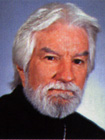Current Perspective on Power Applications Of High Temperature Superconductivity (HTSC) in the United States
By Paul M. Grant, W2AGZ Technologies
Thirty-one years ago, we held the celebration of the discovery of superconductivity at temperatures above liquid air at the Woodstock of Physics meeting in New York City. Many in the superconductivity community and the press heralded this finding as the power deliverance of mankind. Well not yet, and why not? Such is the subject of this brief note.
We will quickly review several successful past power demonstration projects within the United States utilizing HTSC components, and question why HTSC technology is yet to be significantly deployed within the US electric power infrastructure. In short, it is unclear how both utilities and HTSC tech suppliers can make money from its deployment, even though many applications have been successfully demonstrated and now sit on the shelf awaiting shipment. In the beginning, 1911 to be exact, there occurred the discoveries by Gilles Holst and his boss Kamerlingh Onnes of absolutely zero electrical resistance in metallic mercury at 4.1 K. Throughout the decades that followed up to the present, many ideas were proposed for its utilization in various applications for lossless transmission of electric power, its storage, and levitation of trains and alternative transportation alternatives.
Among the former was the speculation of long distance electricity transmission via low temperature superconducting cables by Garwin and Matissoo. Now it’s 1986. In late January of that year, Georg Bednorz and Alex Mueller performed a “rogue” experiment on several copper oxide compounds, an eventual Nobel Prize winning effort, followed within months by the discovery of Tc at 91 K by Paul Chu and his colleagues at UT-Houston in YBa2Cu3O4-y, which then ushered in our current era of “high temperature superconductivity.” Shortly thereafter, in July 1987, President Ronald Reagan announced the Superconductivity Partnership Initiative (SPI).
The SPI was terminated in 2010 after over two decades of pursuing successful demonstrations of power applications such as wire, cable, transformers, fault current limiters, rotating machinery and storage. There were a large number of stakeholder institutions participating in the SPI during its duration. Today that map is essentially blank. In late 2014, the Department of Homeland Security (DHS) initiated a three-phase study of role HTSC might have in creating a resilient electric grid (REG) capable of surviving natural disasters (e.g., hurricanes) or terrorist attacks.
At present, all three phases have been completed and reviewed, but only the results of the first have been released to the public. Access to phases 2 and 3 findings remains unclear. Please visit the DHSREG webpage (dhs.gov). It is the opinion of this writer that all HTSC power applications work and await deployment in the energy enterprise given an opportunity to earn profits for both users and technology providers along with a specified societal benefit. What is now needed is an engineering economy study, undertaken by DOE/DHS in partnership with the nation’s public and private utilities to identify such opportunities, coordinated with possible new social mandates. An example of such an economically successful undertaking is provided by the creation of microgrids uniting neighborhood solar generation with chemical storage (lithium-ion batteries) (both technologies already on the shelf for several decades) in response to a social mandate to reduce carbon emissions. An analogy for HTSC might lie in multiple uses of underground rights-of-way to unite delivery of both electrical and chemical energy to be socially mandated in order to reduce environmental eco-invasion. In the meantime, we will continue to experience the admonishment voiced by MIT scientists Foner and Orlando back in 1988, “Widespread use of these [high temperature] superconducting technologies will have far more to do with questions of public policy and economics than with the nature of the new materials”. We suggest a possible path forward based on dual use of energy delivery rights-of-way, and urge DOE/DHS to undertake a series of “engineering economy” studies on this concept and others to encourage private and public utilities to deploy in the interest of stockholders and tax payers.
For a downloadable copy of November 2019 eNewsletter which includes this article, please visit the IEEE Smart Grid Resource Center.

Dr. Paul Grant is a Senior Life Fellow of the American Physical Society and has served on the Executive Committees of the Society for the Forum on Industrial and Applied Physics and the Forum on Education, as well as the editorial advisory board of The Industrial Physicist. In 2005, he was appointed a Fellow of the Institute of Physics, United Kingdom in recognition of his service on the editorial board of the Institute’s Journal of Superconductivity. From 2005 - 2008, he had the honor of receiving an appointment as Visiting Scholar in the Department of Applied Physics at Stanford University. Currently, (2011) he holds an Associate Staff appointment at the Jet Propulsion Laboratory, CalTech, where he uses national computational resources to pursue modeling potential material candidates for room temperature superconductors. In 2012, he was appointed by Nobel Laureate Carlo Rubbia, along with Nobel Laureate Alex Mueller, to the Committee on Superconductivity of the Institute for Advanced Sustainability Science (IASS) in Potsdam, Germany. Most recently (2014), he received the first Distinguished Lectureship Award on the Applications of Physics from the American Physical Society, and in 2014 toured a number of American universities, lecturing graduate and undergraduate physics students on the merits of pursuing future careers in industry and public service. Additional background can be found at www.w2agz.com..
To have the Bulletin delivered monthly to your inbox, join the IEEE Smart Grid Community.
Past Issues
To view archived articles, and issues, which deliver rich insight into the forces shaping the future of the smart grid. Older Bulletins (formerly eNewsletter) can be found here. To download full issues, visit the publications section of the IEEE Smart Grid Resource Center.




